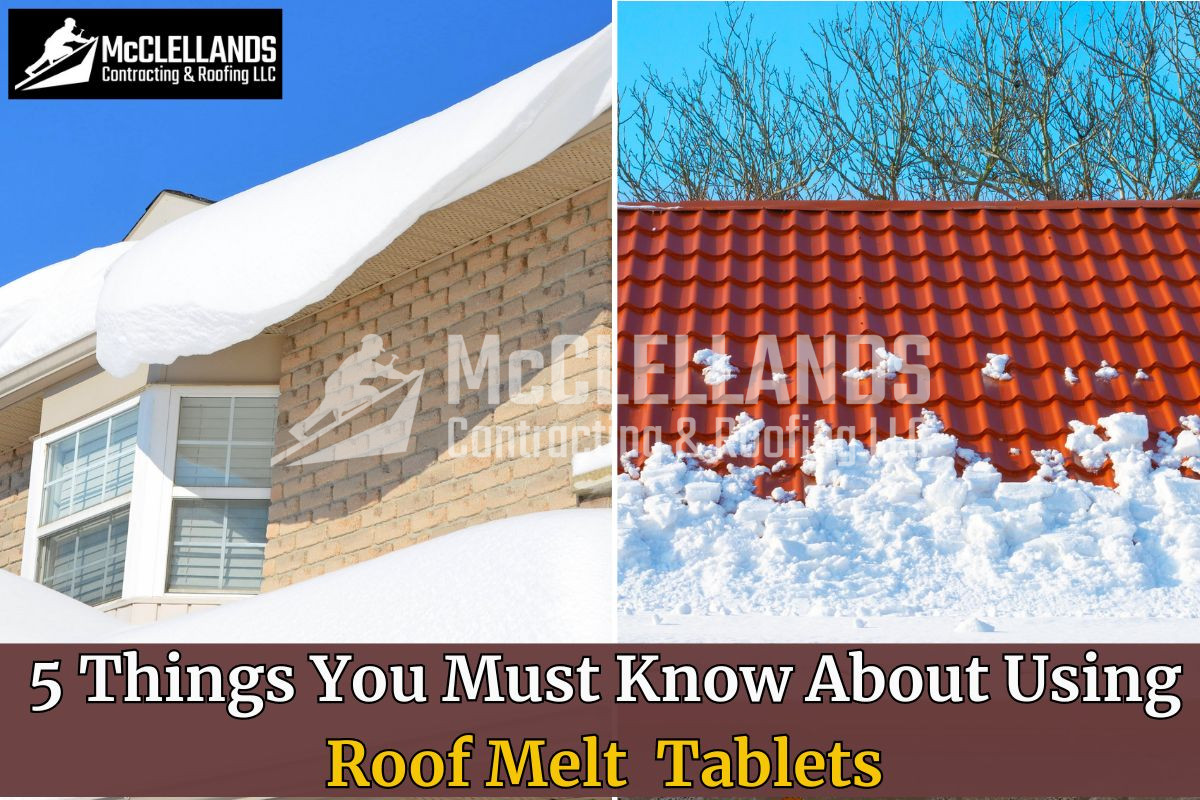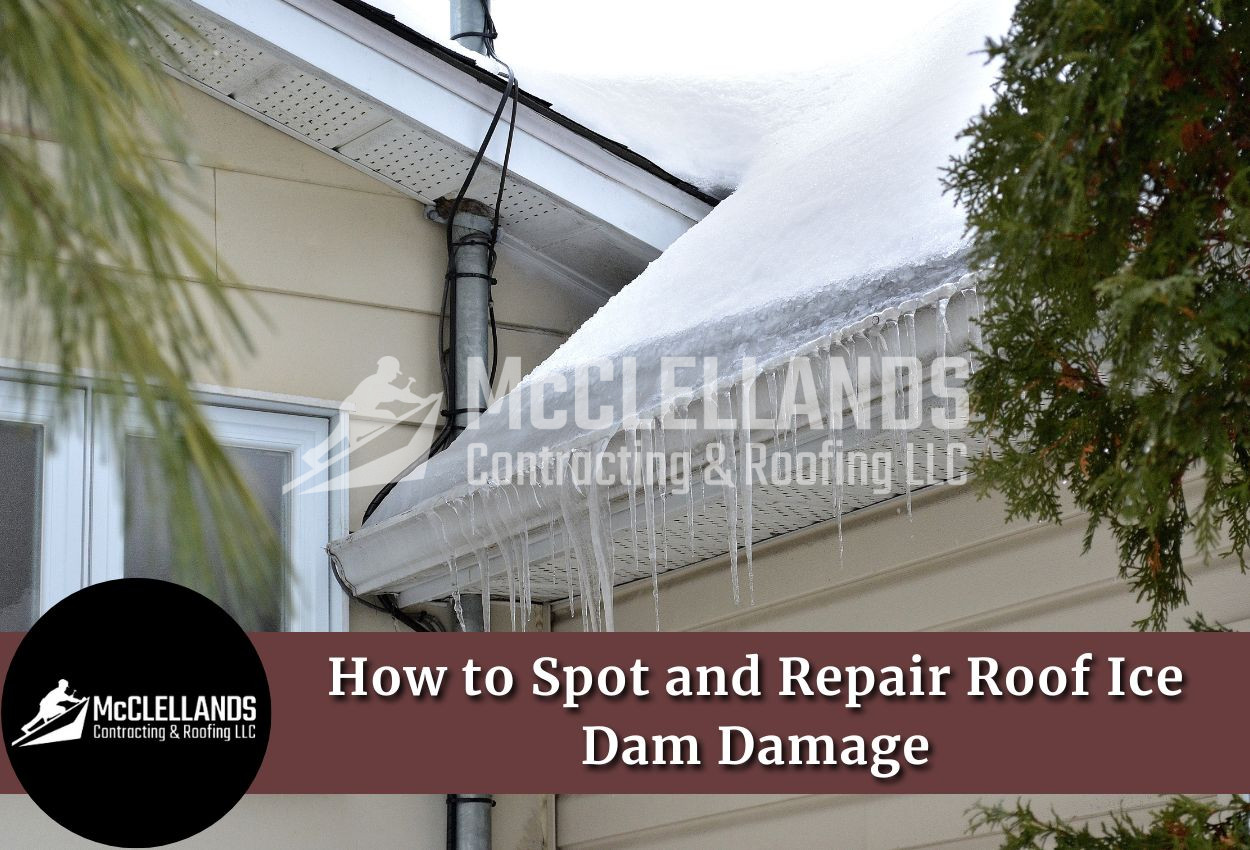Winter is here, and it's common to find snow and ice dams shining on your roof. The piling up of snow and ice on roofs is one of the major causes of leaks, property damage, and accidents. That's where you hear about roof melt tablets.
At McClellands Contracting and Roofing LLC, we're here with a helpful guide for homeowners. In this blog post, you will learn the important facts about roof melt tablets, including their usage, benefits, and drawbacks. You'll also learn about alternative ways to remove snow and ice from your roof.
What Are Roof Melt Tablets And How Do They Work?
Roof melt tablets have become popular in recent years because they seem to be a handy and effective solution for melting ice and snow on roofs. These tablets are also known as ice melt or snow melt tablets, and can be used to clear walkways, yards, gutters, and other areas where ice and snow pile up quickly.
So, how do these tablets work? The concept is quite simple. These tablets are composed of a specialized mix of chemicals and other substances that lower the freezing point of water. When placed on a roof or any other freezing surface, they slowly release those chemicals, which then melt the snow and ice on contact.
Besides the immediate effect, roof melt tablets have a long-lasting effect. This means that even after dissolving, the residual chemicals from the tablets continue to prevent the freezing of water and the subsequent formation of snow and ice.
However, before you go out and purchase these tablets, you should know about the drawbacks of using them.
5 Concerns Related To Using Ice and Snow Melt Tablets
Do you plan to rely on snow melt tablets to prevent water damage to your home? Then you need to know that while these tablets provide a temporary solution for one problem, they can cause multiple other issues.
Here are the common drawbacks associated with using snow and ice melt tablets:
#1 Asphalt Shingle Damage
One of the main issues with roof melt tablets is their chemical composition, which can cause damage to the roofing shingles. When the chemicals reach the surface of the roof, the heat and chemical reactions can cause the shingles to warp, crack, or become discolored. This not only compromises the strength of the shingles but also affects your roof’s aesthetic appeal. It is important to note that this damage may not be immediately apparent, but over time it can cause issues, such as shingle granule loss, missing shingles, and roof leaks.
#2 Corroded Gutters and Downspouts
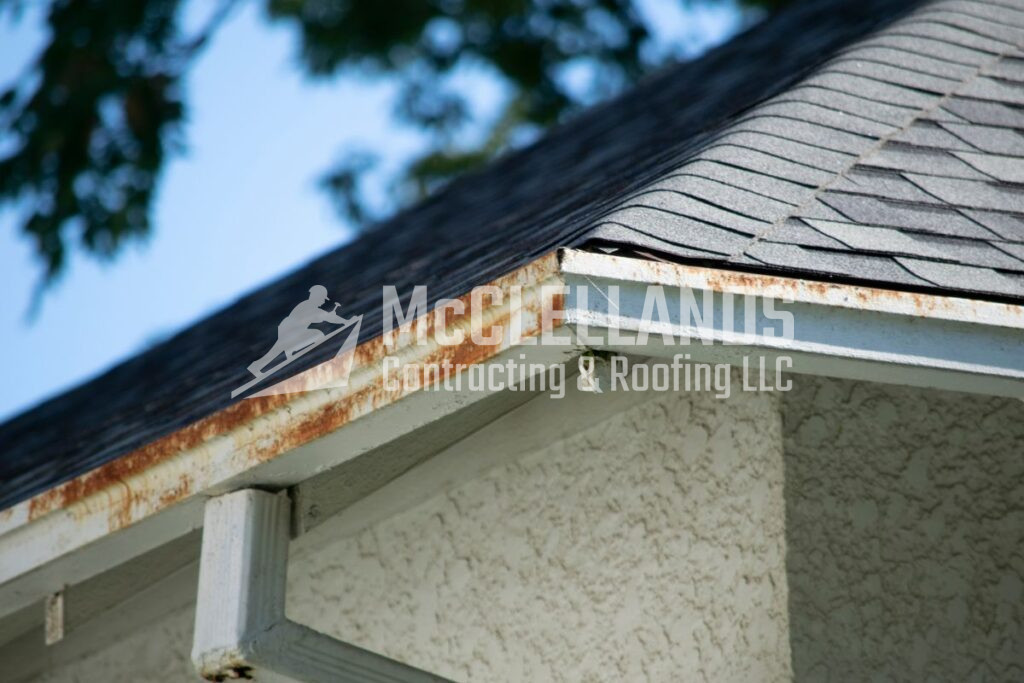
Most tablets contain calcium chloride, which is a highly corrosive substance. When such chemicals come in contact with metal components, such as nails, flashing, gutters, and downspouts, they can cause corrosion over time.
#3 Ineffective During Heavy Snow
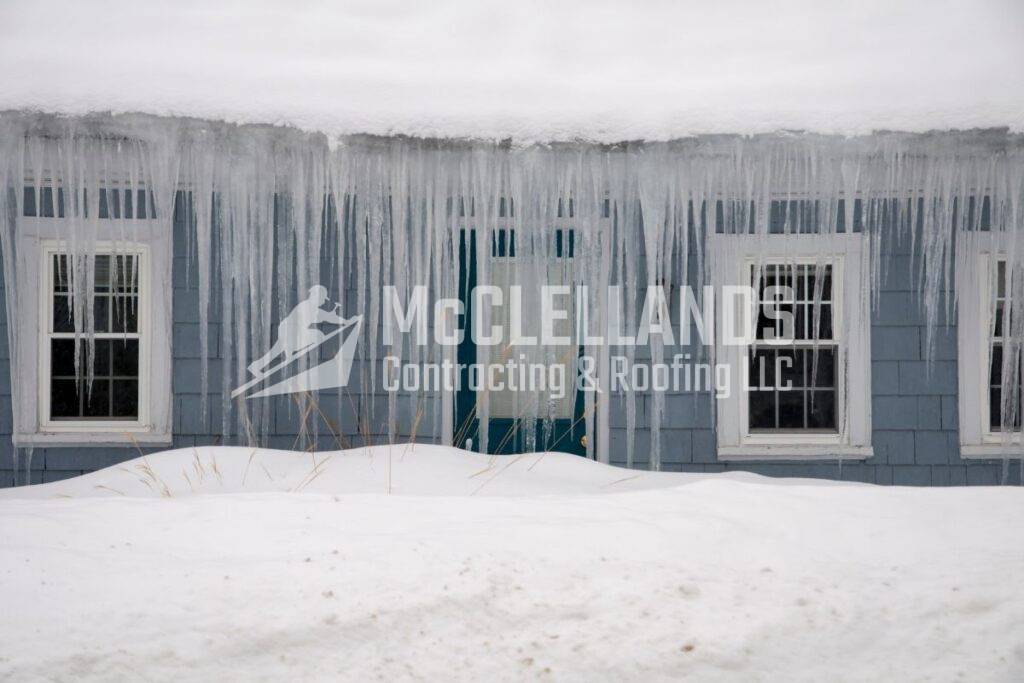
Snow melt tablets may not always be effective. If your area is experiencing heavy snowfall constantly for hours and days, these tablets may not be of much help. This means that in severe winter storms, you will need stronger, and long-lasting measures to prevent roof damage.
#4 Not Cost Effective
A standard single-story home may need a whole 14-pound bucket of tablets. Depending on the size of your roof and the severity of the weather conditions, you may even need more tablets to melt the snow and ice effectively. This can result in high costs, especially if you need to replenish your supply throughout the winter season.
#5 Harmful For Plants, Animals, and Water
Another drawback to using ice melt tablets is the impact they have on the environment. Many of these tablets contain chemicals that harm plants, animals, and the overall ecosystem. The runoff from these tablets may find its way into water sources, causing water pollution and harm to aquatic life. If you care about these aspects, you may want to look for safer and more eco-friendly methods to remove and prevent ice and snow buildup on the roof.
So, now you know that while roof melt may offer a quick fix for dealing with snow and ice dams, it comes with its fair share of disadvantages.
Alternative Ways To Remove Ice and Snow From Your Roof
While ice melt can be harmful to parts of your roof, other alternatives are equally effective at helping with ice and snow during the winter. Always remember that the best approach is to take advantage of professional snow and ice removal services. They are inexpensive, and you won’t need to buy anything or put yourself at risk of falling or getting hurt in the process.
Here are some alternative ways to handle ice dams:
#1 Premium Snow Rakes or Roof Rakes
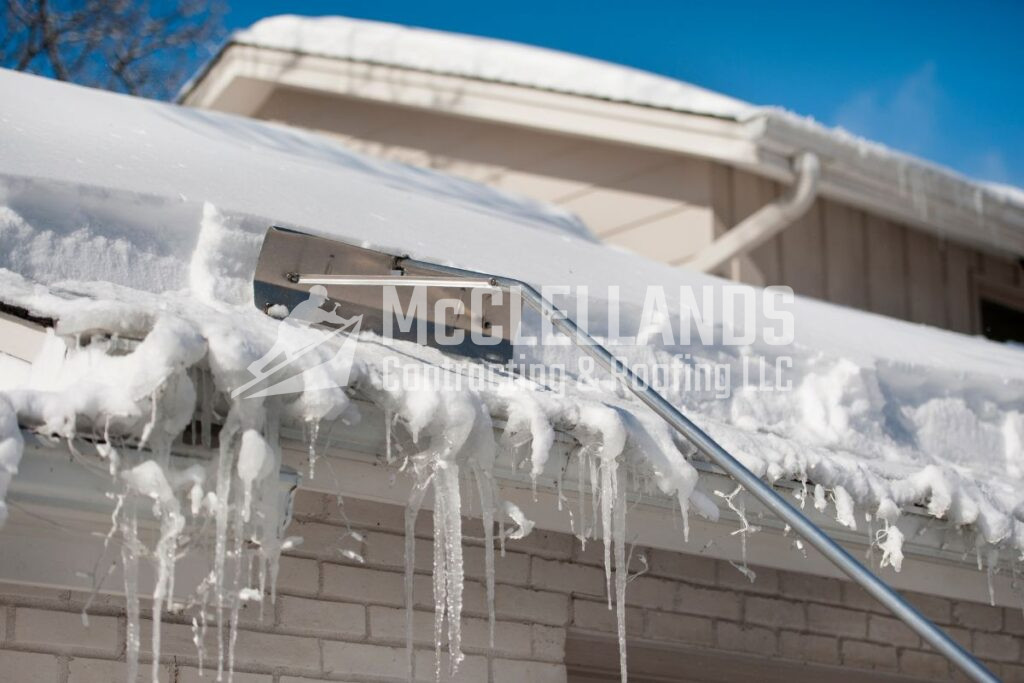
A roof rake is an extended pole that reaches the top of your roof so that you may easily remove snow and ice from the ground level. Unlike basic options, some premium roof rakes come with wheels or rolling mechanisms designed to protect the shingles from damage during snow removal. These wheels help to distribute the weight of the rake evenly, reducing the risk of scratches or dents forming on the roof's surface.
You’ll find that some professionals use rakes of different sizes, which allows for efficient snow removal from various areas of the roof, including roof valleys and around flashing. Smaller rakes can be maneuvered into tighter spaces, ensuring thorough removal of snow buildup in all areas prone to ice dam formation.
#2 Biodegradable Ice Melt Products
Unlike chemical-based roof melt tablets, biodegradable snow melt tablets are formulated with ingredients that are safe for the environment. These products are safer for pets, wildlife, and the environment compared to traditional ice melt chemicals, which may contain harmful substances like chloride salts. They offer a non-toxic alternative for homeowners concerned about the impact of chemicals on their surrounding environment.
Long-Term Solutions To Prevent Ice Dams and Snow
Apart from immediate solutions, you also need to have some long-term measures in place. That’s because ice dam damage is not just a surface problem. If not addressed properly, it jeopardizes your home’s structural components as well.
Here’s how you can ensure your roof is not damaged by snow and ice in the future:
#1 Heated Cables
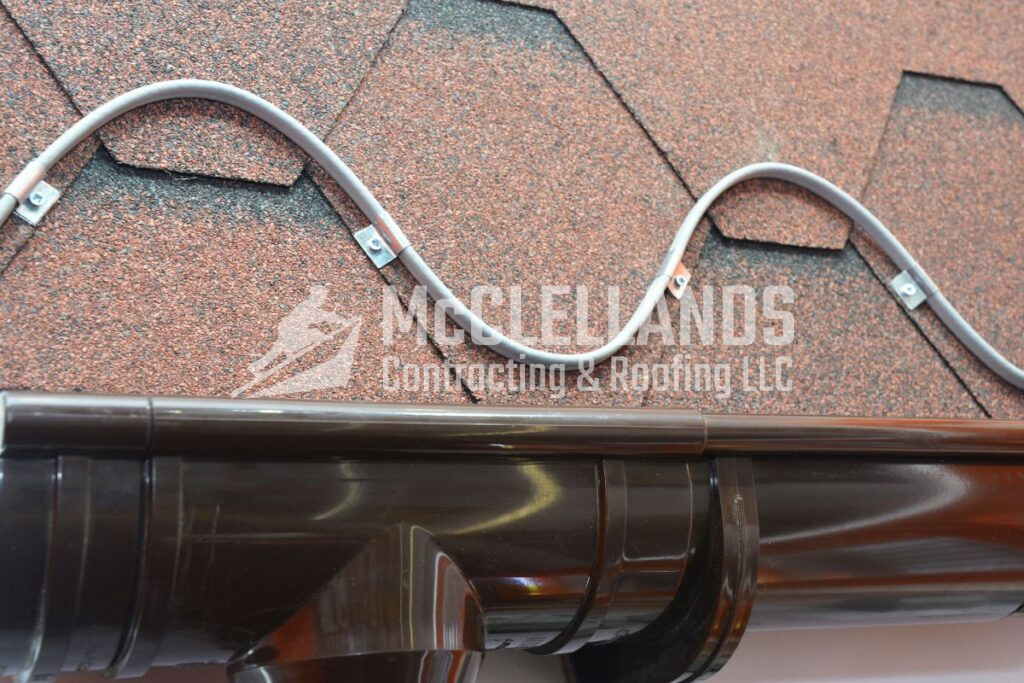
These ice melt systems consist of electric or heated cables installed along the edges of the roof and in gutters. These systems prevent the formation of ice dams by melting snow and ice, allowing water to flow freely off the roof. Heating cables offer a long-term solution to prevent ice dam formation and the associated damage to the roof and interior.
#2 Proper Insulation and Ventilation
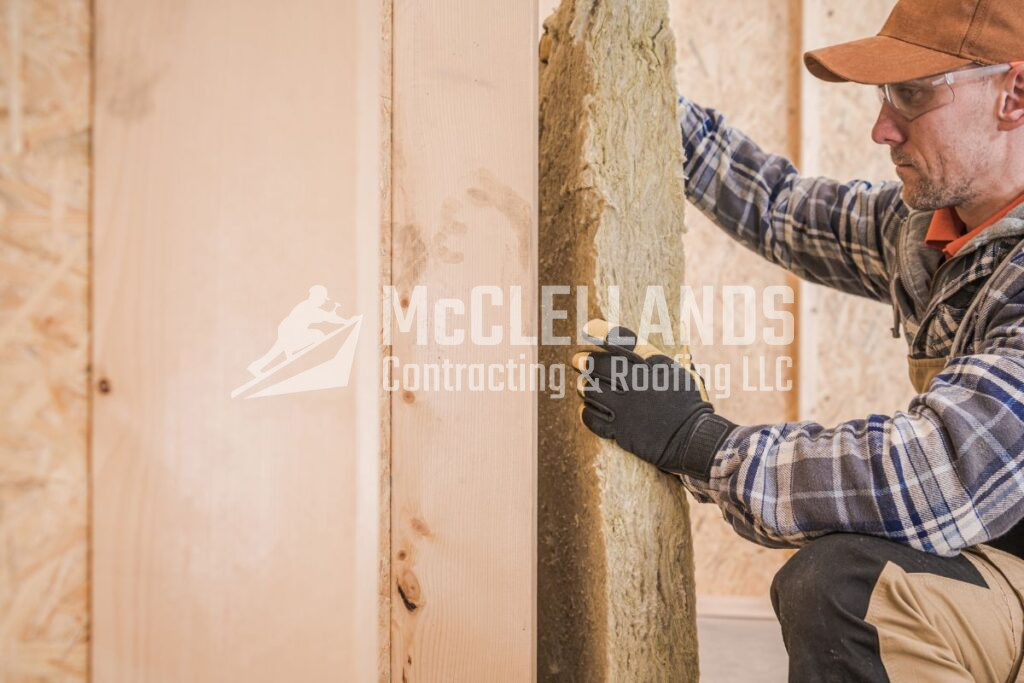
Proper insulation and ventilation of the roof and attic are necessary for preventing ice dams. Insulation minimizes the rate of heat loss in a home, reducing the chance of snow melting and refreezing at the eaves. Well-designed ventilation systems ensure airflow, preventing warm air buildup that can cause snow melt. This helps to maintain consistent temperatures across the surface of the roof, discouraging ice dam formation. Additionally, these measures enhance energy efficiency, lowering heating and cooling costs and improving comfort indoors.
If you need help removing and preventing snow and ice dams from damaging your roof, you can trust McClellands Contracting and Roofing LLC for the best, most cost-effective solutions.
Schedule A Free Consultation On Snow and Ice Dam Removal With One Of Our Experts!
At McClellands Contracting and Roofing LLC, we’ve been providing exceptional residential roofing services in Pittsburgh and surrounding areas in Pennsylvania for years. During this time, we’ve seen how ice and snow can cause damage to the homes in our region, and we want to make sure our customers do not have to face these types of problems. If you want long-term solutions for protecting your home in winter, call us at (412) 353-5660. Schedule a free roof consultation regarding ice and snow removal with one of our experts and discuss your needs and budget.

